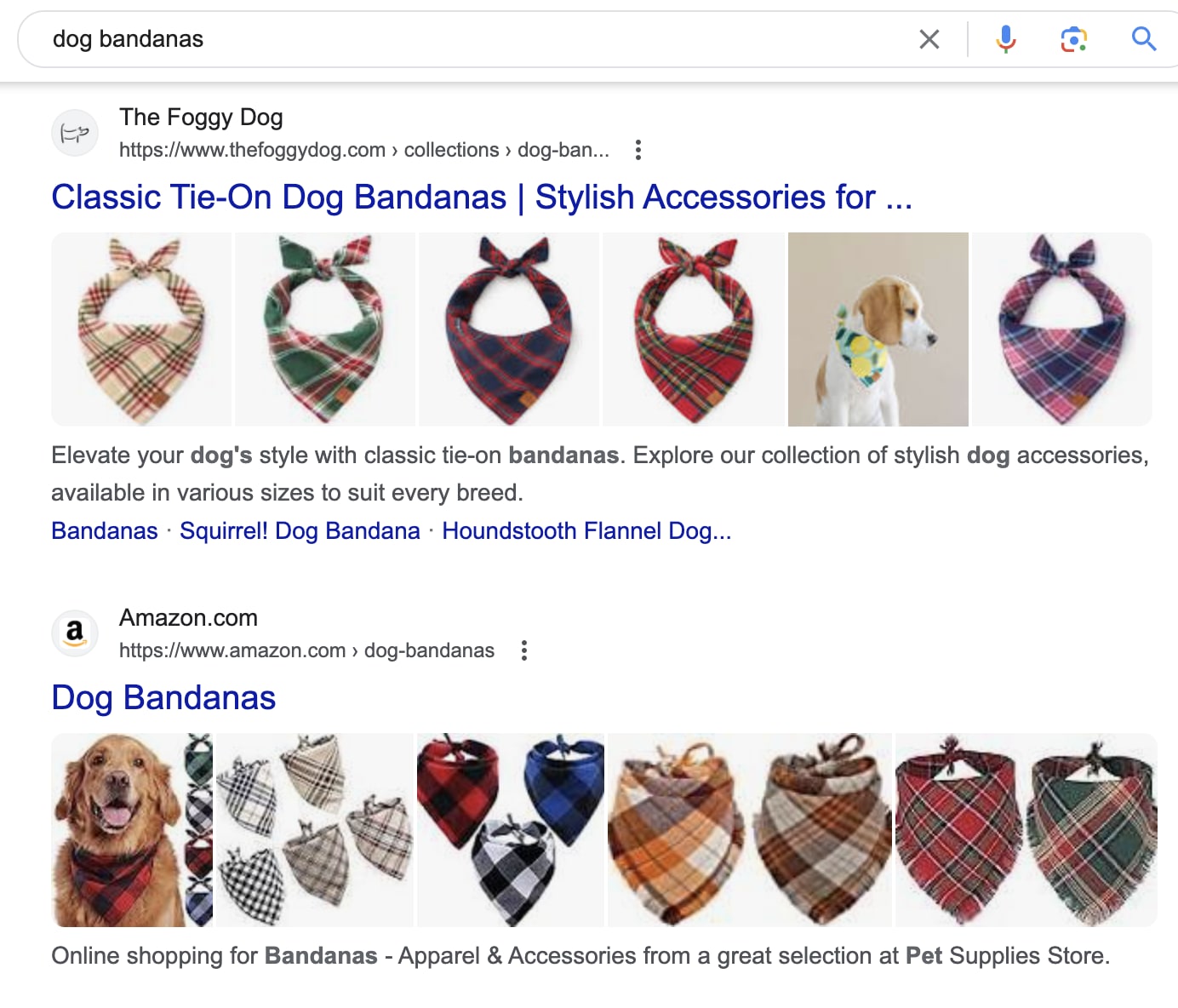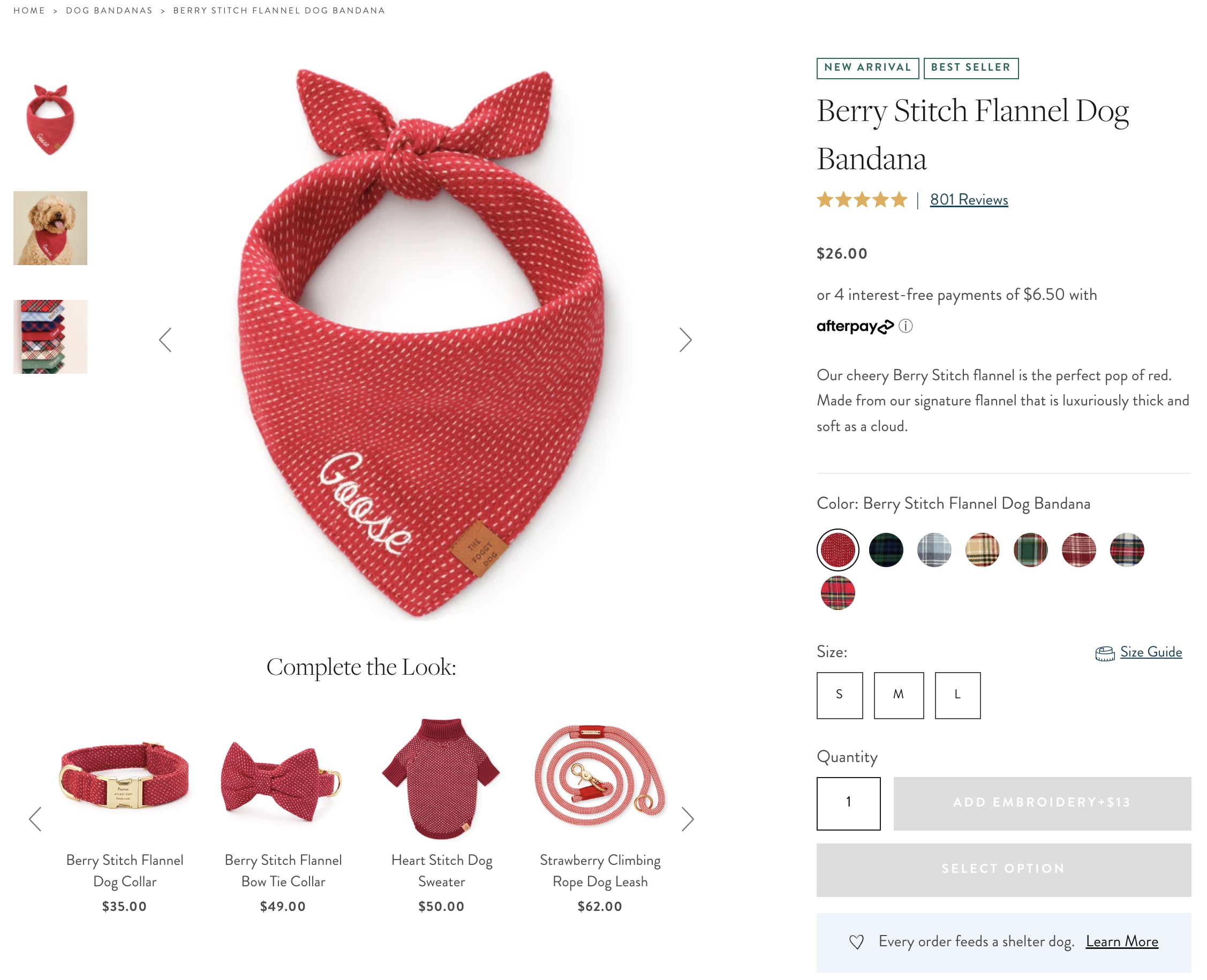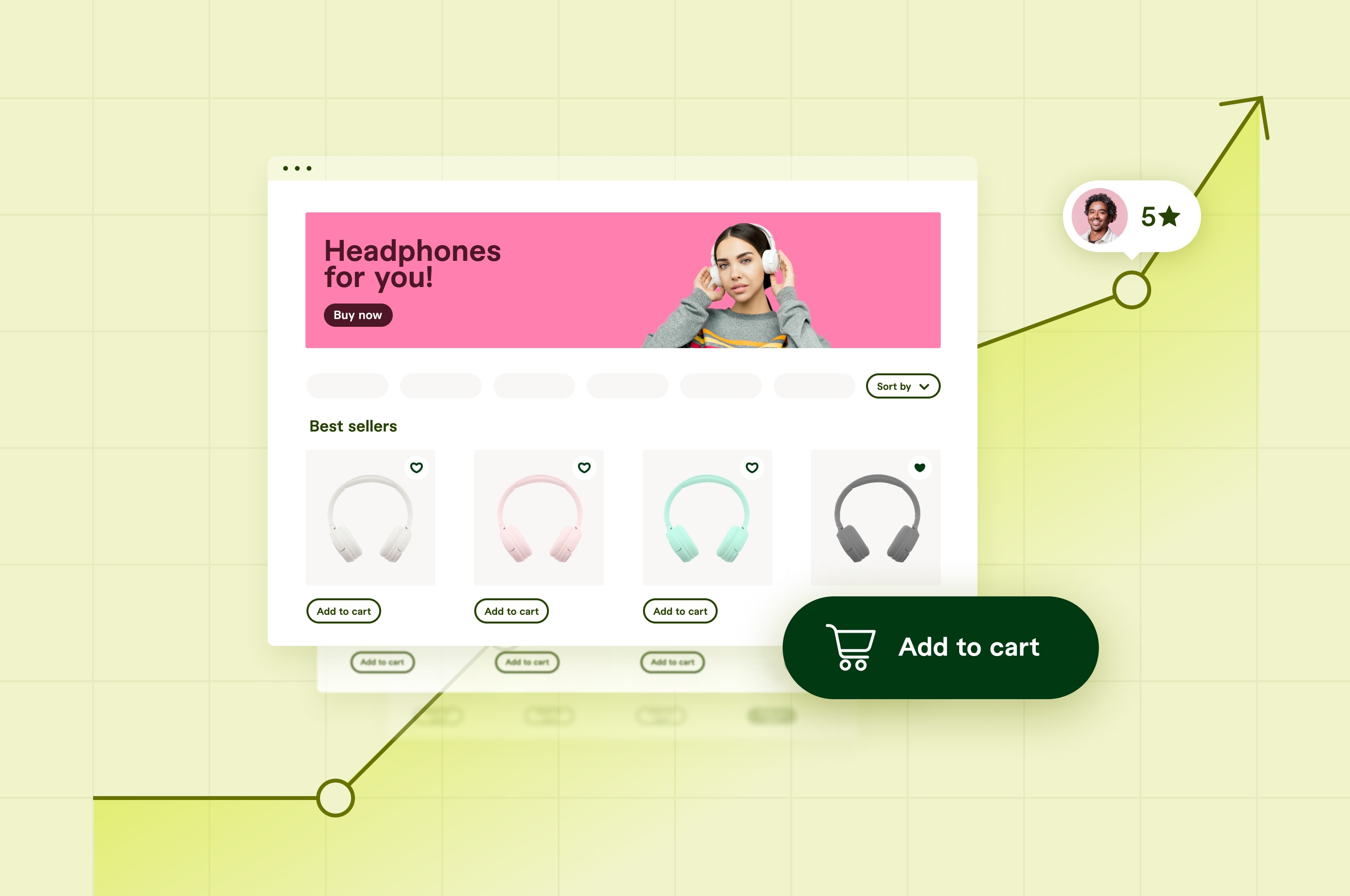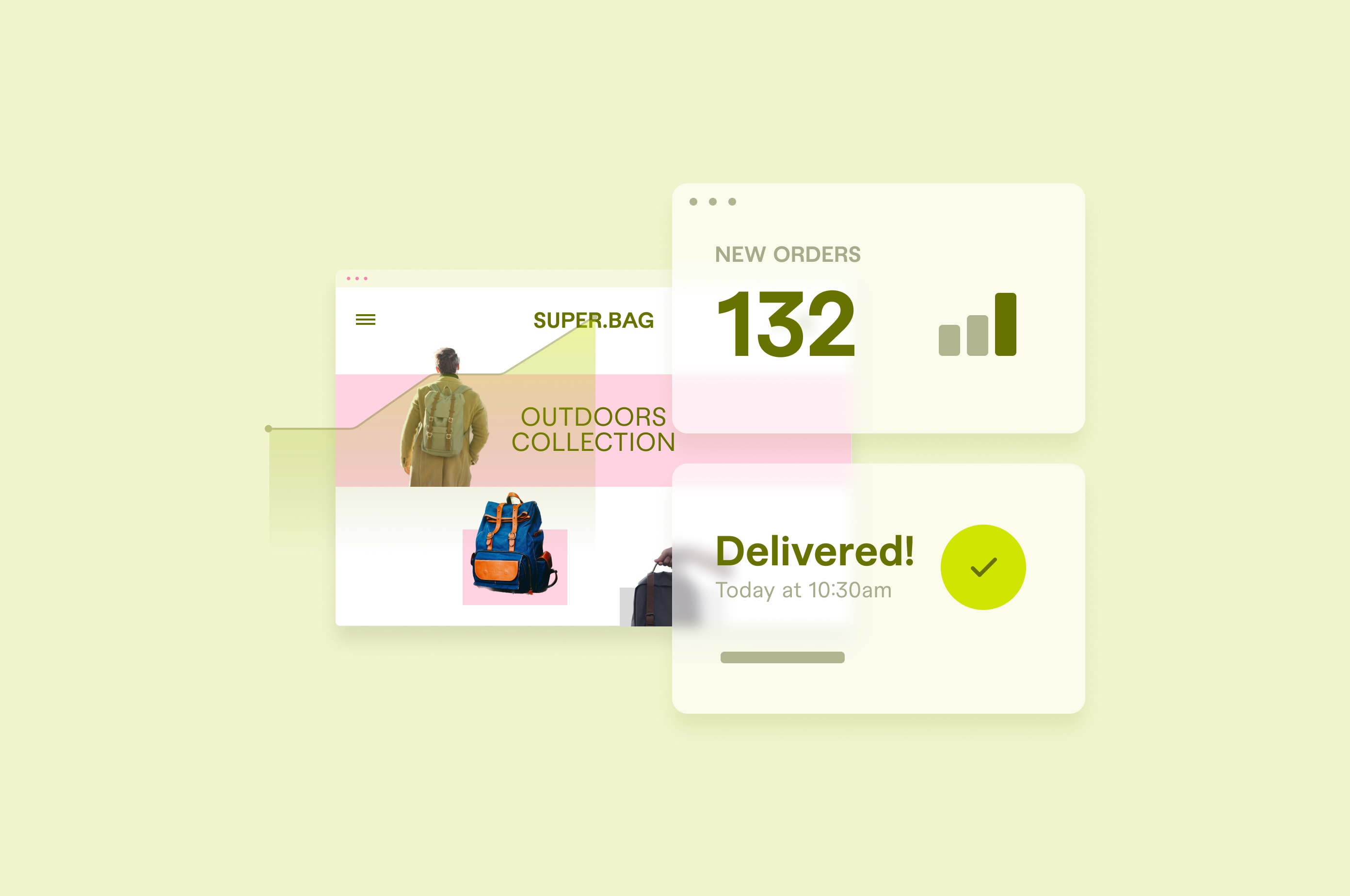How to start a dropshipping business in 2024: 6 simple steps
Anyone can launch a dropshipping business in 2024. Start your own business and leave the sourcing of products to the suppliers.
 January 2, 2024
January 2, 2024 7 minute reading
7 minute reading
The dropshipping business model continues to grow in popularity. In 2020, the estimated value of the dropshipping market was $128.6 billion globally, and is forecast to grow to $476.1 billion from 2021 to 2026. Anyone with an entrepreneurial spirit can begin their own dropshipping business in 2024 by following the six straightforward steps laid out in this guide.
Find an expert ecommerce manager on Fiverr
What is dropshipping?
Dropshipping is a revolutionary business model that’s disrupted traditional retail in recent years. As shopping online continues to grow in popularity, around 33% of online businesses use dropshipping as their fulfillment model. The dropshipping business model allows entrepreneurs and small business owners to offer products to customers without having to purchase or store inventory, resulting in lower overhead costs and higher profits.
The dropshipping process is straightforward: you source products from suppliers, list them on your online store, and fulfill orders by shipping them directly to customers. As the dropshipper (depending on your agreement), you usually pay the suppliers’ wholesale price and keep the profit margin from the retail price the customer pays. This makes it easier to scale your business as demand and customer orders increase. It also means upfrontstartup costs are lower, so you can begin a low-risk business and count on a third party to handle order fulfillment.
Starting a dropshipping business in 2024 is possible with the right strategy. Whether your business structure is a side hustle or a sole proprietorship, we have a simple step-by-step guide to turn your dropshipping dream into a reality.
1. Choose a niche business idea
Narrowing your ecommerce business idea to a niche may feel like you’re limiting yourself, but it’s an effective way to build a loyal following. When you hone in on a highly selective target audience, it’s easier to market and appeal to your ideal customers vs. targeting the general population.
A beginner business should start with a limited amount of products, to prevent spreading itself too thin. But, one upside of being a dropshipper is you don’t have to store products yourself, allowing you to sell different types of products from the get go. Your offerings are the cornerstone of your business model and branding, so choose a niche you think is profitable, and that you’re passionate about.
To figure out your niche:
Conduct keyword research. Search engine optimization (SEO) is important for any website, and your dropshipping store is no exception. Keyword research complements your market research by showing the search volume and competitiveness for different keywords. Plus, your chosen keywords may relate to the products you’re selling.
Use Google Trends. Google Trends offers real-time data on shoppers’ online searches, helping business owners identify potential trending products before they become too competitive or saturated.
If you’re still unsure what niche to pick, check out Shopify’s 2023 research on the most profitable dropshipping products. While apparel, beauty, and pet products are large markets worth investing in, your niche needs to be more specific.
Some examples of specific niche include:
A graphic t-shirt clothing company for snowboarders
A lipgloss company for young adults
A custom dog bandana company for pet lovers
Consider testing your products with different demographics to understand if there is enough interest from your intended audience. And if you can separate yourself from current rivals in the space. Remember, even though you’re focusing on a narrow niche, there could still be plenty of competition.

Example of a Google Trends result for the term “dog bandana.”
2. Engage in competitor research
If you’re looking to launch a successful dropshipping business, conduct competitor research. Begin by identifying major players within the industry and analyze their websites, product offerings, and promotional strategies.
If you notice a lot of well-known brands in the niche, consider rethinking your business idea. It’s tougher for new businesses to break into industries populated by much larger companies.
Here are different ways to gauge the competition:
Enter your products into Google. If you’re selling dog bandanas, type that into Google search and review the first few results. These are your biggest competitors in SEO, so look at their strategies to see what’s worth replicating.
Look at your competitors’ social media pages. Many online businesses rely on different social platforms, like Facebook, Instagram, and TikTok, to promote their brand. Analyze which posts get the most engagement, how many followers they have, and how interactive their target audiences are.
Read customer reviews. Both positive and negative reviews are valuable to you when conducting research. These testimonials can give you an idea of where other companies may lack, letting you differentiate yourself from the competition.

Google search for the term “dog bandanas.”
For instance, let’s say you’re selling dog bandana. You Google this term and see what companies show up. After clicking on the first company, examine its product pages and pay attention to the product descriptions and pricing.

Product page for The Foggy Dog pet bandana.
3. Choose a supplier and platform
One of the most important decisions you’ll make about your dropshipping business is selecting a reliable supplier and platform. A dropshipping supplier provides products listed on an ecommerce store, while the platform is what you’ll use to create and manage your store.
Suppliers
When researching suppliers, compare the following:
Prices
Shipping times
Product quality
Customer support channels
Return policies
Many businesses opt for domestic suppliers because shipping costs and sales tax are lower, and there’s less chance of delays because of customs issues. However, international suppliers can offer unique items at lower prices not found domestically, increasing your profit margins. Print-on-demand suppliers are also a go-to for businesses that sell apparel as their primary product.
Most large-scale suppliers are in China, the largest exporter of goods since 2009. Verify your future supplier’s business license to avoid scams.
Platforms
While you can make your own website on WordPress, some ecommerce dropshipping platforms can assist with finding a supplier. Woocommerce and Shopify account for 38.7% and 10.3% of the ecommerce market share worldwide, respectively, and both let you connect DSers. DSers is an AliExpress dropshipping partner that lets you find potential suppliers. Alibaba is another popular platform with a supplier database for dropshipping companies to work with.
To choose the best ecommerce platform, consider features, such as:
Payment processing capabilities (including support for various currencies)
Mobile-friendly design options
SEO optimization tools
Website analytics tools
Integration with social media platforms
Support for multiple languages.
Capability of adding plug-ins or custom code
After making your decision on a supplier and platform combination, don’t forget about optimizing visibility across other channels, like Google Shopping, or marketplaces like Amazon or eBay.
4. Create a quality website with high-quality products
Creating a successful dropshipping business requires building a website with high-quality products. After selecting a platform, it’s time to design your ecommerce website.
Follow these tips to launch an attractive and functional website for your dropshipping business:
Choose a relevant domain name. Use SEO to attract customers to their shop, but also create an easy-to-remember domain name. Pick something related to your products and your business name.
Add branding to your store. Add your branding and ecommerce design elements, like your logo and branding colors. This ensures customers recognize your brand over competitors. Invest in a good theme or template to make your store visually appealing.
Build quality product pages. Establish individual product pages with detailed product descriptions and high-quality images to encourage customer purchases. This can be time-consuming, but it helps make your products more enticing.
Optimize your website. Avoid ecommerce SEO mistakes when optimizing your website. Pay attention to the keywords you choose, ensure your site is technically sound, and has a simple checkout process. Consider adding plug-ins to add features that simplify and improve the customer experience.

Fiverr freelancer Wix Buddy will build a Shopifydropshipping store or Shopify website.
5. Market your business effectively
Launching an amazing website without marketing it—a waste of your time and effort. Depending on your market research, there are several marketing strategies you can try, depending on your target audience and where they spend most of their time online.
Here are several examples.
Social media marketing
If you sell to a younger crowd, such as Gen Z, TikTok may be a better platform to invest in than Facebook. The social media platform’s newfound popularity—it’s been downloaded more than 4.5 billion times worldwide since 2020—means businesses are still experimenting with the best way to use it. Instagram is another popular platform with a younger user base, while Facebook is best for targeting an older audience.

Chart depicting TikTok and Instagram users by age group in 2023.
Influencer marketing
Social media influencer marketing is another great way to get your dropshipping business noticed in 2024. Partnering with influencers who have an established presence on different platforms can help you reach new potential customers and build brand awareness. When selecting influencers, make sure they align with your vision and values so their followers feel connected to your brand message.
Email marketing
Emails are a form of content marketing that builds relationships with customers and keeps them informed about new products. Consider automating and segmenting emails based on customer behaviors or preferences, as shown in these eight email marketing examples. This ensures a seamless shopping experience for customers.
PPC marketing
Pay-per-click (PPC) campaigns on Google Ads or Meta Ads (formerly known as Facebook Ads) can drive traffic to your online store. Building targeted campaigns around specific product-based keywords ensures the right people see ads. And reduces wasted money on ad clicks from unqualified leads who are unlikely to purchase from you.
6. Monitor performance and optimize your business strategy
Constantly monitor your dropshipping business’s performance and metrics and make necessary changes.
Keep tabs on the following metrics:
Customer feedback
Reviews
Website traffic
Conversions
Customer retention
Consider analytics software or plug-ins to analyze your data more effectively, or work with a data analytics freelancer to make sense of these numbers for you. The more you can refine and improve your business model, the better your business finances—and bank account—will look.
Constantly watch for new trends to stay one step ahead of your competition while ensuring customers remain satisfied with your offerings. With these measures in place, you can maximize profits and flourish your businesses.
Work with a freelancer to start your dropshipping business
One major benefit of owning a dropshipping business is that you don’t have to handle logistics and other time-consuming tasks, but that doesn’t mean you can’t use assistance. Maybe you need help starting your ecommerce business on Shopify or with general ecommerce management, there’s a freelancer out there ready to assist.
Join Fiverr to access a growing marketplace of specialized talent and offload time-consuming tasks so you can focus on growing your dropshipping business in 2024.



